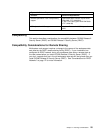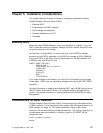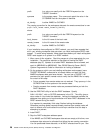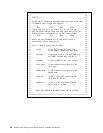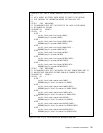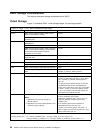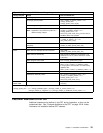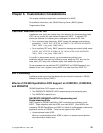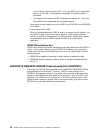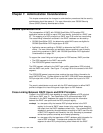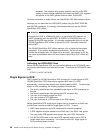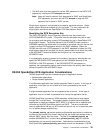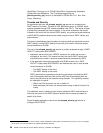
Figure 21 (Page 2 of 2). RACF Estimated Storage Usage
Storage Subpool Usage How to Estimate Size
ELSQA Connect group table 64 + (48 × number_of_groups_connected)
In-storage generic profiles 160 + number_of_generic_profiles × (14 +
average_profile_size +
average_profile_name_length)
RACF storage tracking table 3500
RACROUTE REQUEST=LIST profiles
Note: Applications can place these profiles in a
different storage subpool.
52 + (number_of_profiles_in_class × 16) +
(number_of_resident_profiles × (10 +
average_profile_size + (1.5 ×
class_max_profile_name_size))) for each class if
GLOBAL=YES is not specified
CSA RACF global access tables 3040 + (number_of_user_classes × 24) + 2 × (18
+ number_of_entries × (6 + (1.5 ×
max_profile_name_size)))
RACF database control structures (DCB, DEB,
templates)
4600 + (number_of_BAM_blocks × 6) + (364 x
number_of_RACF_primary_data_sets)
RACF subsystem control blocks 3500
ECSA RACF data set descriptor table and extension 168 + (896 ×
number_of_RACF_primary_data_sets)
RACF ICB (non-shared DB) 4096 per RACF database if the database is not
shared and is not on a device marked as shared,
0 otherwise
RACF program control table 105 × average_profile_name_length
RACF resident data blocks For each primary RACF database:
3248 + (4136 × number_of_database_buffers)
If using sysplex communication, for each backup
database add:
3248 + (4136 × number_of_database_buffers × .2)
Dynamic parse tables 30 000
SETROPTS GENLIST profiles 52 + (number_of_profiles_in_class × 16) +
(number_of_resident_profiles × (10 +
average_profile_size + (1.5 ×
class_max_profile_name_size)))
User private
Below 16MB
RACF transient storage 16000 (minimum) while a RACF service is
executing
Formula for average_profile_size:
average_profile_size = 51 + average_installation_data + (average_number_of_access_entries × 9) +
(average_number_of_categories × 2) + (average_number_of_conditional_access_entries × 17)
Customer Additions to the CDT
Additional classes can be defined in the CDT during installation, or they can be
customized later. See “Customer Additions to the CDT” on page 35 for further
information on installation-defined CDT classes.
Chapter 5. Installation Considerations 33



